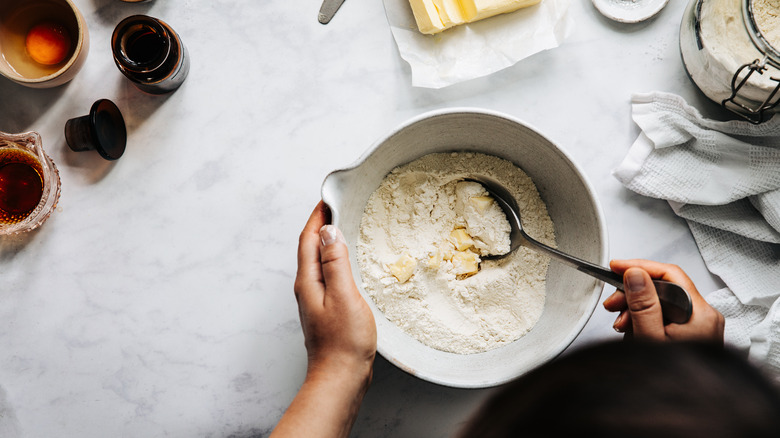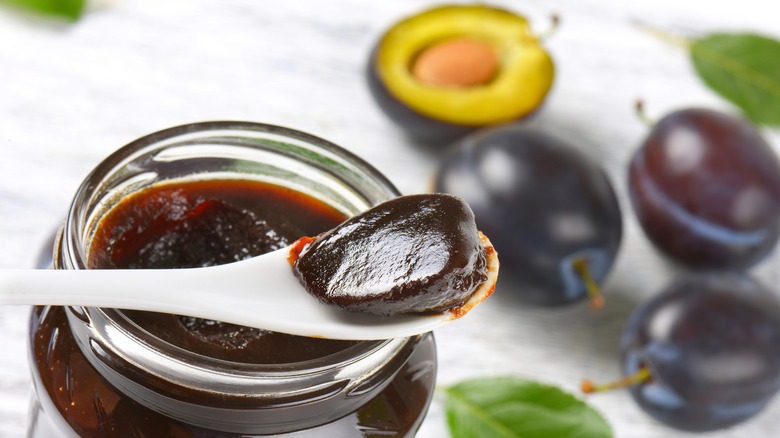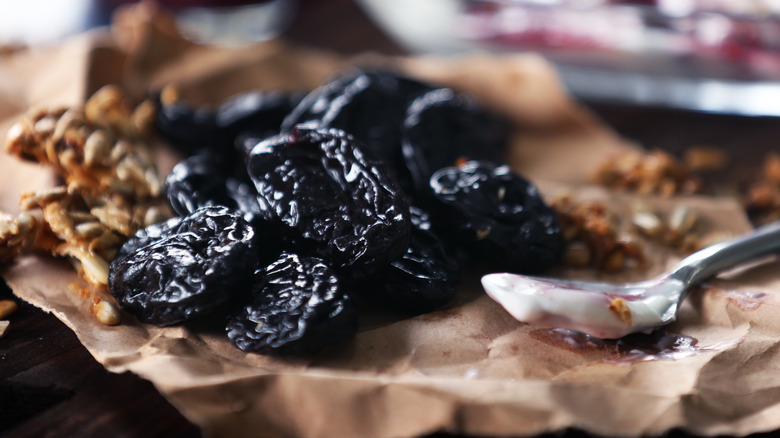The Best Homemade Substitute For Butter That You Should Try In Your Bakes
When baking something from scratch, butter is probably the first ingredient you make sure to have on hand. If you don't have sugar, you can use other sweeteners like honey or syrup (agave, maple, etc.), and the same can be said for eggs, which can easily be substituted with other pantry staples like applesauce, mashed bananas, and even vinegar and baking soda. But when it comes to butter, beyond margarine or shortening, your choices are limited.
Margarine and shortening are effective butter replacements because much like butter, they're also forms of fat. Margarine is the most similar to butter, as it's also made up of 80% fat. While butter is made with cream, margarine is made with vegetable oil. Shortening is also made with vegetable oil, but the fat content is 100% as opposed to 80%.
Margarine and shortening are perhaps the most obvious and popular butter substitutes, however, there's actually another option that's just as effective, and you won't find it in the dairy aisle. For a unique, richly fruity upgrade, consider swapping in some prune butter.
You can turn prunes into butter
It's safe to say that anyone who bakes knows of salted and unsalted butter, but they may not be familiar with prune butter. Unlike butter, margarine, and shortening, prune butter — prized in kitchens throughout Central and Eastern Europe, where it is known as lekvar — is made with neither cream nor oil, but rather dried fruit. Prune butter is usually paired with cheese and crackers, spread on bread, or used as a hamantaschen cookie filling, but it can also be used in place of butter.
Due to added sugar and the natural sweetness of the fruit, prune butter is sweeter than other butter substitutes. But if you don't like the artificial taste of margarine and the blandness of shortening, it might be the best option next to butter. Though replacing the butter in your recipe for fruit spread is probably the last thing you'd think to do, there's an important reason it works well: steam.
How to make prune butter
Even though prunes are virtually fat-free, prune butter functions similarly to fats in baking. It doesn't melt like butter does, but it does produce steam. Steam helps baked goods rise, and it's usually produced by the water in the butter. Prune butter, being that it contains water as well, has the same effect. They both also add a rich flavor to baked goods, though prune butter is of course much fruitier and sweeter.
In the 1990s, the California Prune Board started tinkering with prune butter as a replacement in baking, providing The Baltimore Sun with samples of some prune butter brownies. While the treats were described as flavorful, the testers noted that "The texture was a little different, spongy rather than chewy," but added, "if you're a chocoholic looking for a low-fat treat, you should at least give these a try."
You may be able to find the butter substitute at your local grocery store, but prune butter is relatively easy to make yourself. Simply add dried prunes to a pot and add enough water to cover them. When the prunes soften, you can chuck them into a food processor and puree them along with some sugar. After some time in the refrigerator (a few hours is ideal) you'll be able to use it in your baked goods.


